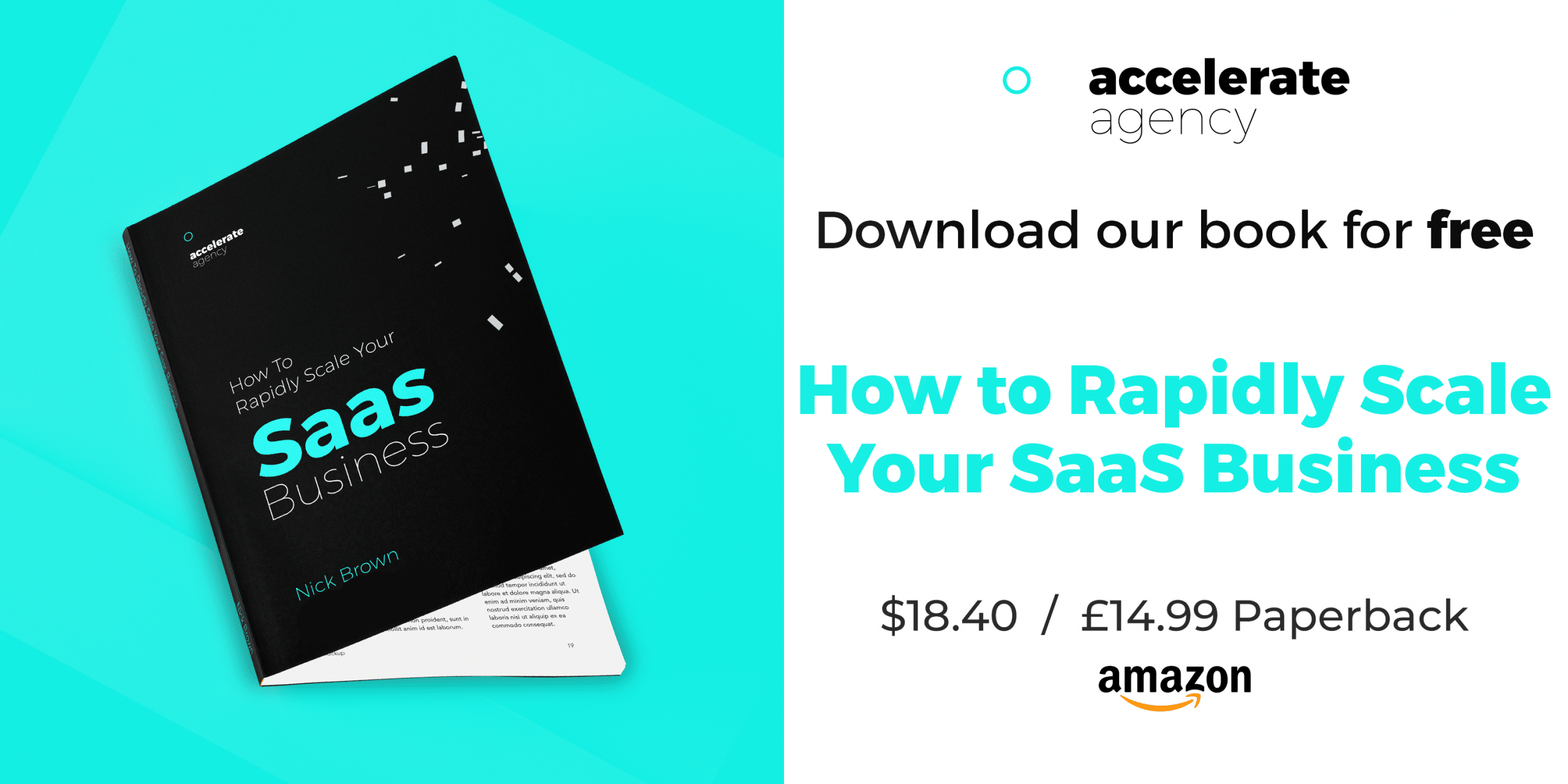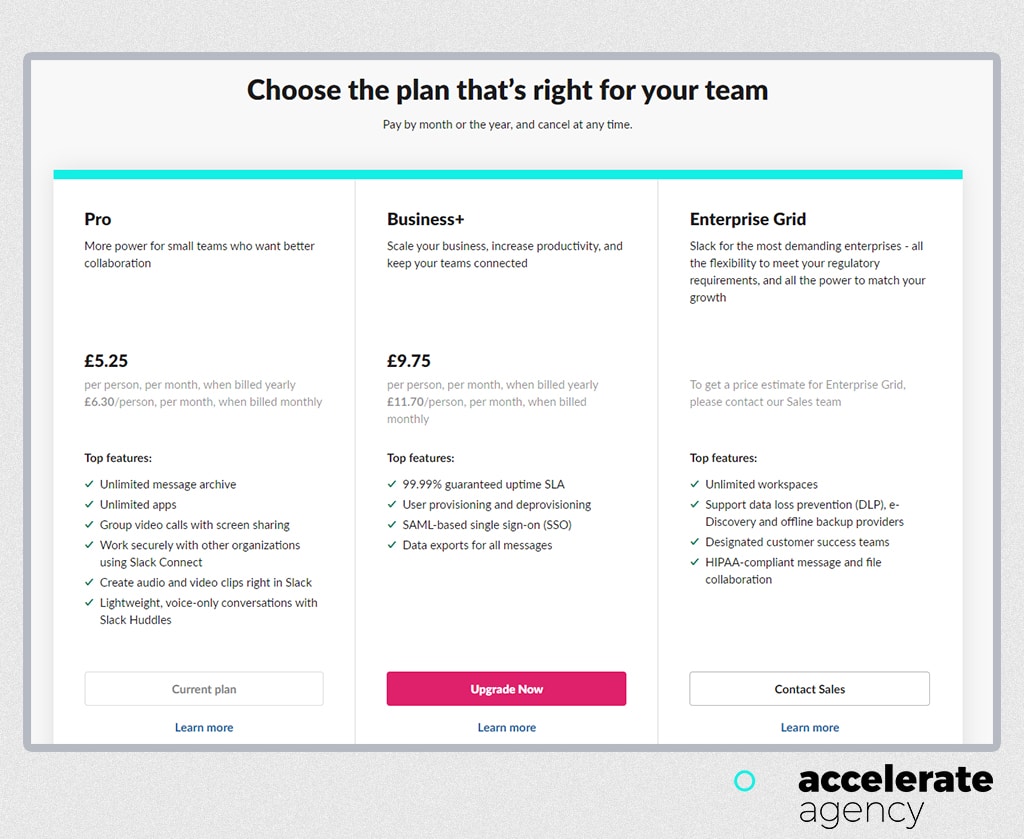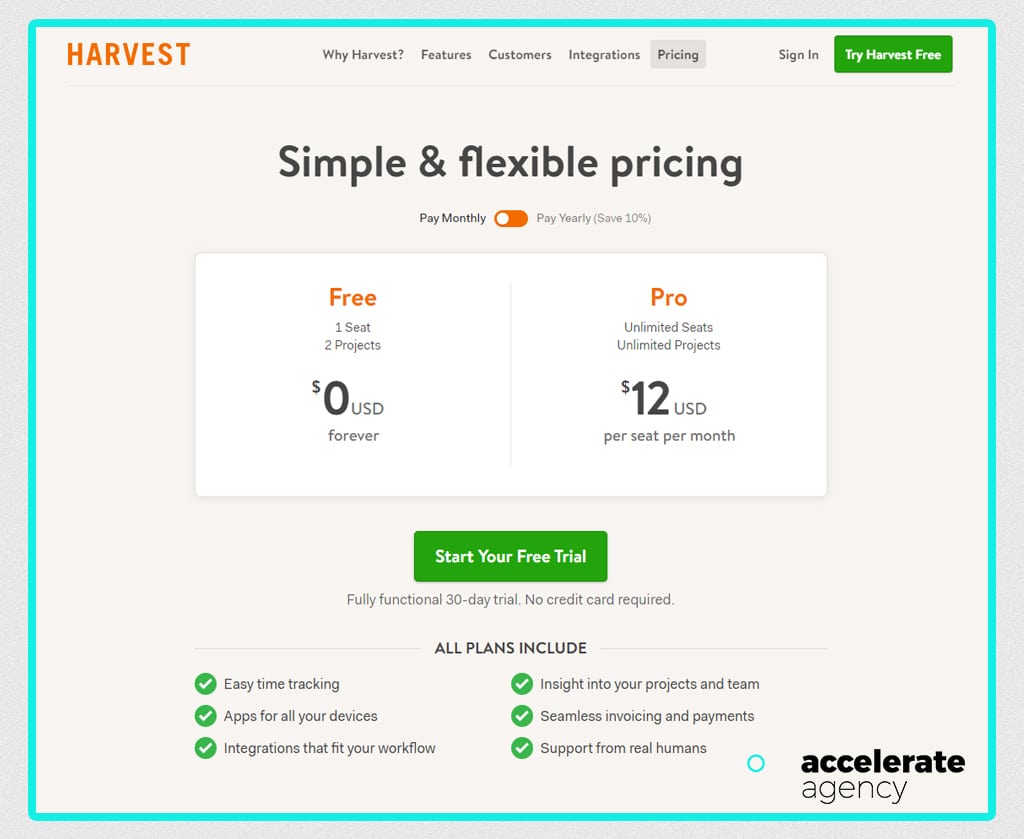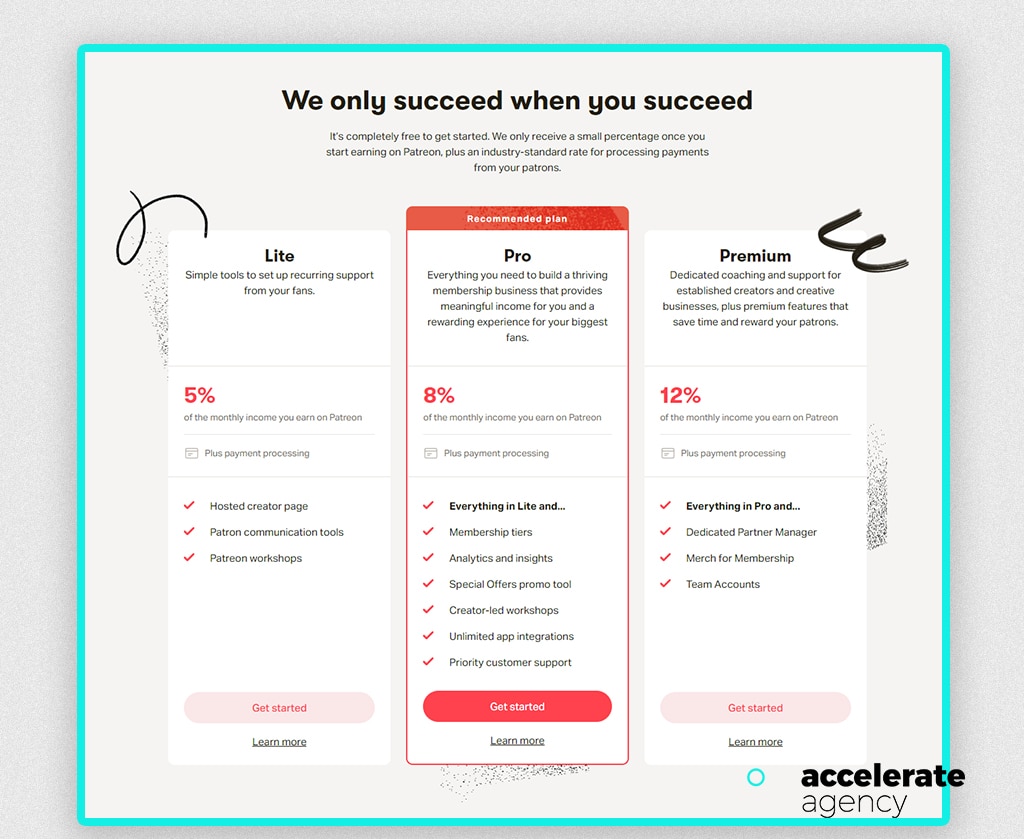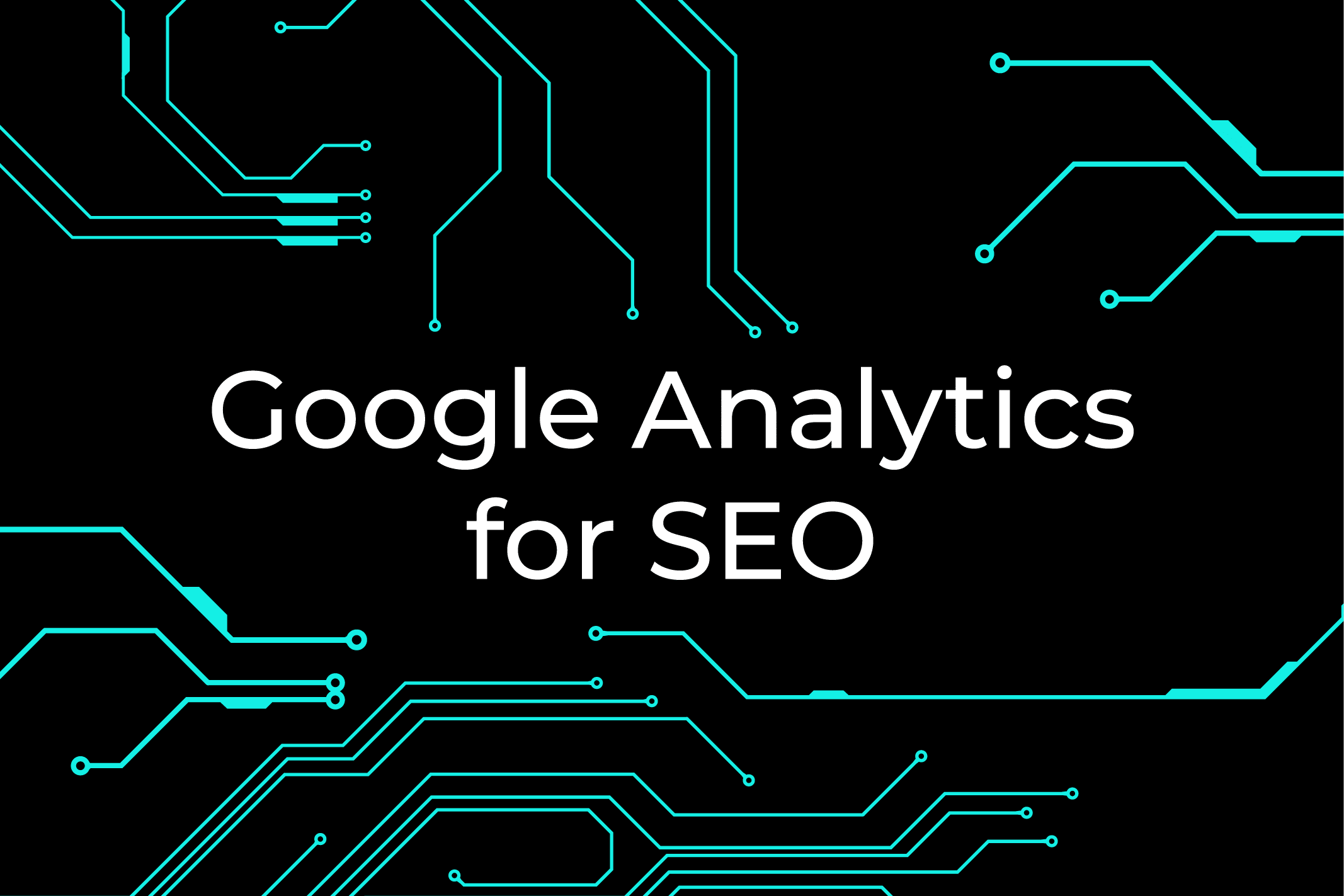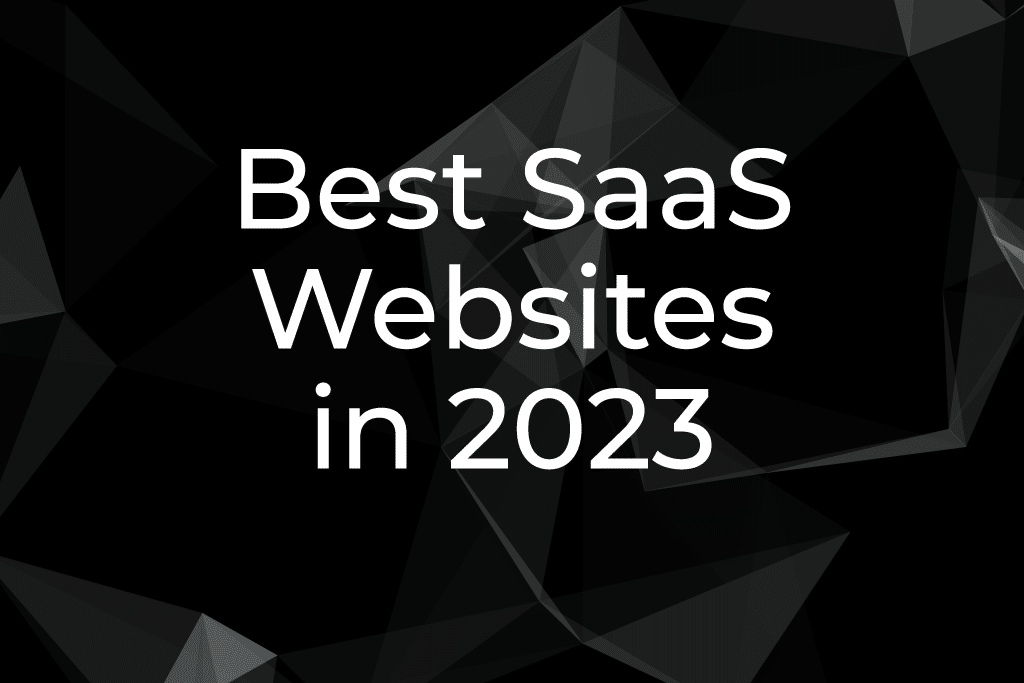SaaS Pricing Pages: 8 UX/UI Strategies To Create Conversions
We assume that your SaaS business is a beautiful one. Wonderful software that solves enterprise business problems all day, every day. But what if your SaaS pricing pages let you down? Your pricing pages are a pivotal point in converting leads and have a huge impact on your conversion rates. So let’s not fall at the final hurdle.
You’re going to learn eight UX/UI strategies to turn okay-ish SaaS pricing pages into lean, mean, lead converting machines. As a SaaS SEO agency this is based on working closely with our clients.
To make your life easier, we’ve included a handy list of sections to jump ahead to:
- Keep it simple
- Include prices
- Customer personas
- Tailor pricing to your product value
- Mental triggers
- Currency conversion options
- Leverage psychology
- Encourage immediate actions
Is your pricing page doing the trick?
What is a SaaS pricing page?
A Software as a Service pricing page is a landing page dedicated to your software’s pricing strategy. The pricing page includes different packages for enterprise customers, showcasing features and benefits.
Here’s a great example of a market-leading SaaS pricing page from Slack:
Should you have a pricing page?
Unequivocally, yes.
A pricing page for your SaaS enterprise is essential. Prospective customers deciding whether to sign up for your SaaS product need to know how much it is. It’s that simple. And they can’t make a decision if this information isn’t freely available on your website. And if they can’t decide? That’s right, they jump ship. Probably never to be seen again.
Now we’ve got that out of the way, let’s dive into the ways to drive conversions from your SaaS pricing pages.
Learn more. Reserve a Consultation with the accelerate team.
1. Keep it simple
To encourage sign-ups, simplicity is key. Your potential customers want information quickly. So give it to them. Each package option should be clearly defined, with a condensed list of features. Comparisons between plans should be easy, so limit the range of price plan options.
This SaaS pricing page from Harvest is a perfect example of simplicity, detailing just two plans with obvious feature lists:
2. Include prices
It may be tempting to keep your pricing structure under wraps from competitors. But in reality, you’re also preventing conversions from potential customers. Come out from under the blanket and share your SaaS price plans’ actual costs. Your potential buyers can then make informed purchasing decisions.
3. Customer personas
Each tier of your SaaS pricing matrix should align with your target customer personas from your marketing plans. Assuming your target customer profiles are on point (and if they aren’t, check out our content marketing services), then this step shouldn’t be too tricky. Customers must resonate with your transparent pricing plans to convert, so make it easy for them to know which product plan is for them.
Consider elements such as:
- Demographics. Who are your target buyers, and where are they?
- Values. Which plan benefits resonate with your target audience?
- Price points. How much will each target buyer group pay for their most valued features?
4. Tailor pricing to your product value
The next step after customer personas involves collecting analytics data about services they value most. Match this with customer feedback to work out a value-based pricing strategy. Then pitch your SaaS pricing pages to these values. Carefully choose your tone to convey the best message, and price each plan according to the price tolerance of each buyer persona group.
Appcues does a great job of clearly demonstrating monthly pricing tiers for each business, together with options for future business growth:
Your product pricing must reflect the value of your product’s features to your potential customers. What do we mean by this? Clearly justify each price plan’s cost by the value it offers businesses.
5. Mental triggers
Salesforce makes a sweeping statement that converts with an eye-catching title. Promising sales faster and smarter, these mental triggers capture target customers when they’re prime for conversion. The try for free buttons encourage sales triggers further, implying their product offering is easy and involves no-catch.
6. Currency conversion options
Make it easy for all business models and companies from all countries to understand your SaaS pricing pages. Simple toggles for currency conversions are a powerful tactic to encourage all website visitors to sign up, wherever in the world they are.
7. Leverage psychology
Think about your SaaS pricing page design. Are the colors compatible? Are they easy to read? Embrace all the psychological triggers in your toolkit to coax conversions. A couple of ways to do this include:
- Pricing. Show discounted price plans to indicate customers are getting a great deal. It also demonstrates that they should act quickly to nail that price now.
- Anchoring. Highlight your most popular price plan to draw attention to it.
- Customer testimonials. Include previous feedback to reinforce trust in your business.
Patreon succeeds beautifully with the anchoring technique:
8. Encourage immediate actions
Your target customer is at the decision stage. Do everything in your power to make sure they make the right choice (signing up) by providing the next step (preferably with flashing lights).
Use language such as Add to cart or Sign up now to encourage swift action. A value-based pricing strategy should reiterate the value your customers will receive immediately after signing up. Something like Start saving money today encourages buying decisions. Ensure your CTA buttons are bright, visible, and above the fold.
Is your pricing page doing the trick?
Your SaaS pricing page is the most important one for your target buyers to see. It should demonstrate simply what your plans are, and how much they cost.
Empower your customers to decide what’s best for them by providing the relevant information. Keep your pricing matrix simple and align them with target customers to optimize conversions. And remember to review your pricing strategy in accordance with customer expectations.
If you’re in the enviable position of running a rapidly expanding SaaS business, and need a little guidance, downloading our eBook on how to scale would be a great move.
